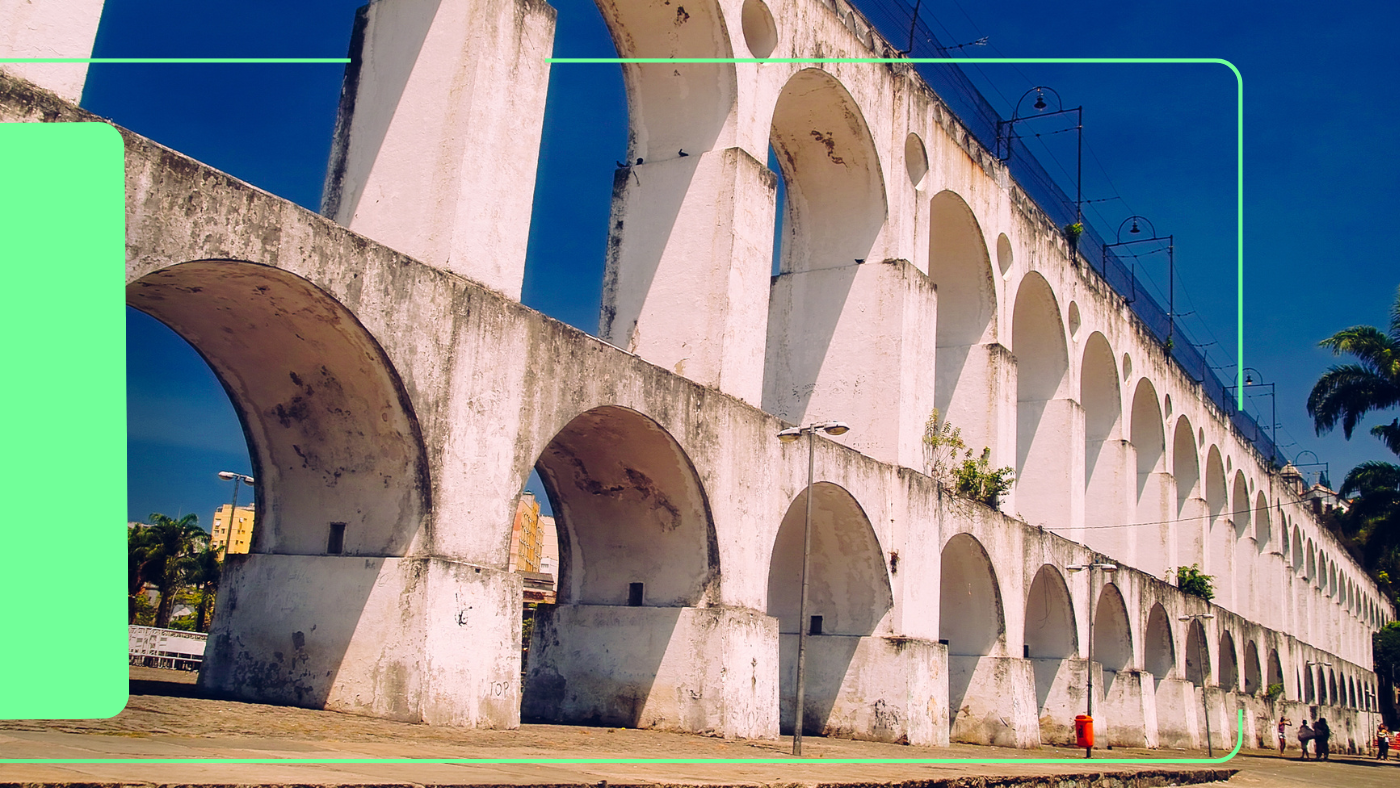Challenges and achievements of Sanitation in Brazil
You turned on the tap and thump, the water came out. What if someone asked you: where does this liquid so essential for life come from?
Sometimes rain, rivers, springs, dams and/or groundwater. The process is complex and carried out by the water concessionaires in each city. We even publicize how water treatment is done on Instagram.
There are several steps for water to reach your tap. From capture, through treatment to the distribution process – there were years of evolution. And the history of basic sanitation in Brazil is related to the demand of population growth.
Urban growth
As cities grew, pressure increased for improvements in sanitary conditions. The city of Rio de Janeiro was a pioneer in the implementation of water supply and sewage collection systems.
It was in this wonderful city that the first aqueduct in Brazil was built: Arcos da Lapa, in 1723. The objective of the work was to transport water from the source of the Rio Carioca to Largo da Carioca, in order to supply the city's population.
But the period of industrialization brought significant challenges to sanitation. Rapid urban growth has resulted in crowding and a lack of basic infrastructure, leading to public health problems. At the beginning of the 20th century, Brazil was known for epidemics such as yellow fever, smallpox and bubonic plague.
The challenges and achievements of Sanitation in Brazil
In the 1970s, there were significant investments in basic sanitation, mainly in large urban centers. There was the creation of the Basic Sanitation Company of the State of São Paulo (Sabesp) and the expansion of water and sewage networks in several regions.
Water and sewage projects began to be implemented in large cities, marking the beginning of the transformation in this crucial sector.
The 1990s were marked by structural reforms and changes in the role of the State in providing services.
In 2007, the Basic Sanitation Law established national guidelines for the sector. This legal framework was essential for promoting investments and partnerships, seeking to expand sanitation coverage across the country.
Despite advances over the decades, Brazil has faced significant challenges, such as river pollution and the degradation of water resources.
Awareness about the importance of environmental preservation has become mandatory to promote more sustainable and equitable sanitation policies.
Present Day: New Sanitation Legal Framework
In 2020, Congress approved the New Sanitation Legal Framework. The objectives are: 99% of the population with drinking water, 90% with sewage collection and treatment and gradual reduction in losses
If Sanitation is Basic, it must be everyone's right. The reality is different, the lack of access to adequate services mainly affects the poorest areas and rural regions.
It is estimated that currently 35 million Brazilians do not have access to treated water and 100 million do not have adequate sewage treatment.
It will take 10 years to universalize water and sewage services. The action must be now.
> Investment in smart technologies, that reduce water losses;
> Sustainable management of water resources;
> Promotion of conservation practices and environmental education;
> Develop and implement government policies that prioritize universal access to drinking water.
These are some of the fundamental actions to achieve universal access to drinking water and sewage treatment.
Only with joint efforts by government, the private sector and civil society can we build a future where everyone has access to decent sanitation conditions. 🤝
